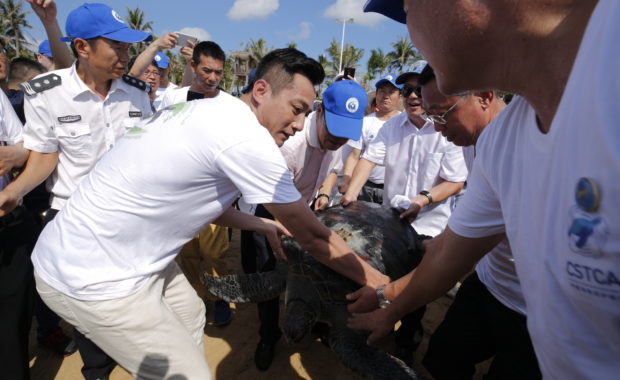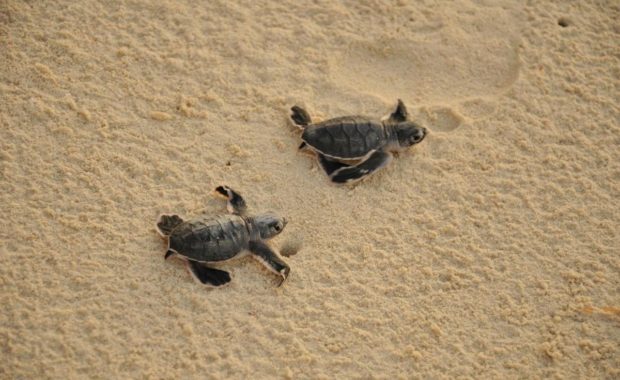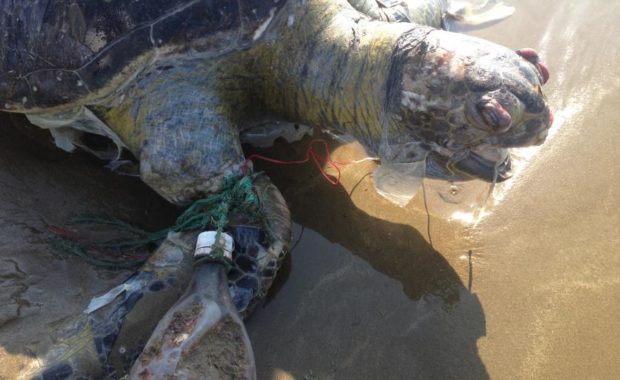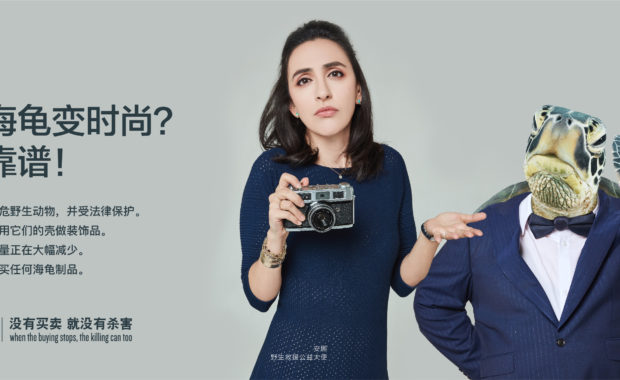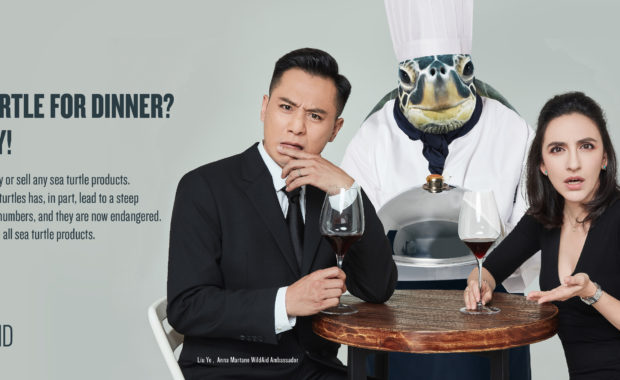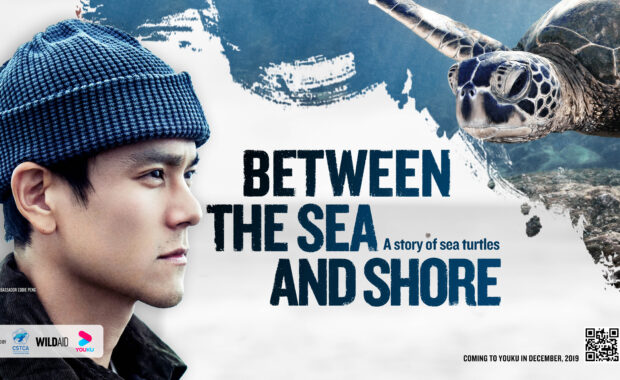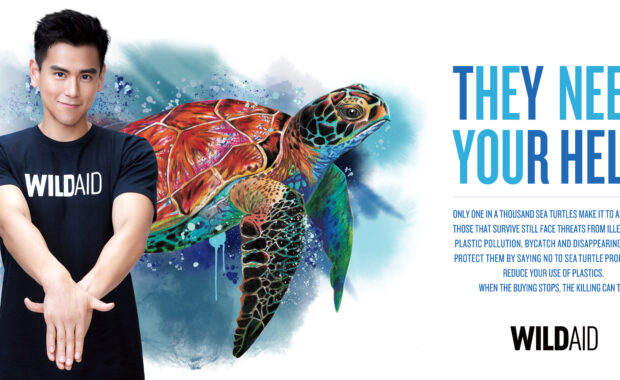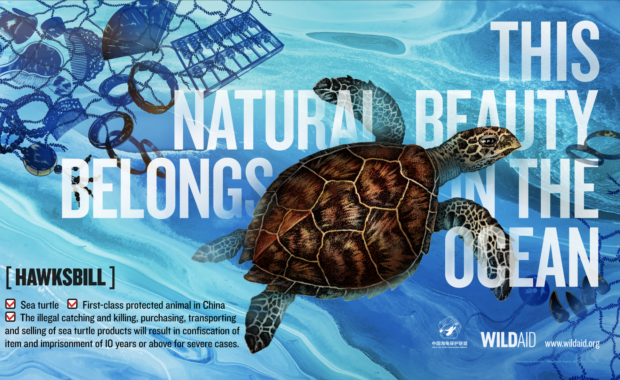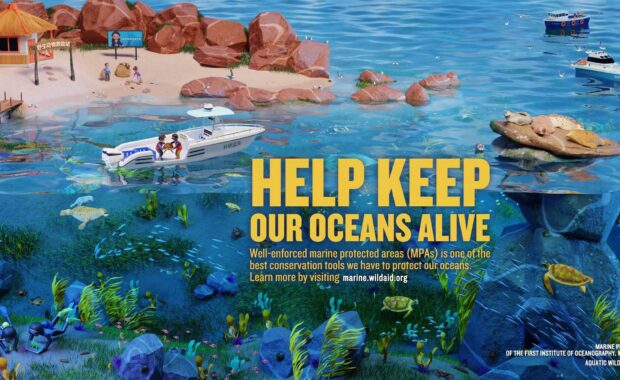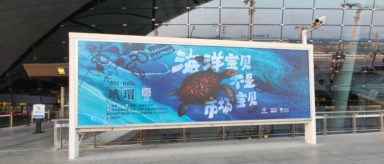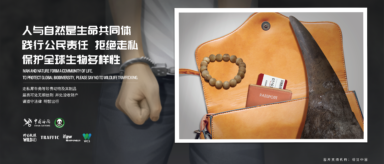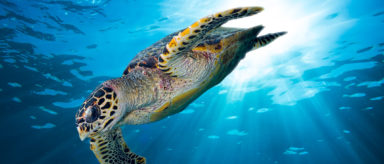All seven species of sea turtle are threatened by the illegal wildlife trade, habitat destruction, and ocean pollution.
Around the world, sea turtles are revered for their beauty and celebrated as one of Earth’s oldest creatures: The seven species in existence today have been around for over 100 million years. Yet, now, due to a multitude of human-based threats, all sea turtles are at risk of extinction. Illegally killed for their eggs, meat and shells, sea turtles face direct pressures and overexploitation from poachers in Asia, Africa and the Caribbean.
International trade in all seven species is banned. Still, turtle products are commonly consumed for their protein value, rich aesthetic, and alleged health benefits. Hawksbill turtles are often sold as whole taxidermies or their shells are made into products including jewelry, musical instruments, and other collectibles. Even when not targeted directly, accidental capture and entanglement in fishing gear results in drownings. Rapid human development of coastlines around the globe reduces the number of suitable nesting sites and feeding habitats. Increased presence of garbage and plastic waste in our oceans poses critical new threats.
- 7
There are seven species of sea turtles, two of which are Critically Endangered: Hawksbill and Kemp’s. - 86%
The percentage of Chinese people in a 2020 survey who believed law enforcement efforts against the fishing and illegal trade of sea turtles should be strengthened. - 151 stone
The weight of the largest leatherback turtle ever recorded, measuring more than 9-1/2 feet long and 9 feet from flipper to flipper. About 100 years old, he was found on a beach in Wales in 1988.
Making an impact
WildAid protects sea turtles on two fronts: on one side, reducing demand for sea turtle products, and on the other strengthening protections for sea turtles in priority marine areas, leveraging both area-based and species-specific conservation measures.
WildAid is partnering with several Chinese government agencies to protect sea turtle habitats and reduce demand for the animal’s parts. With partners including the Fisheries Resource Management Bureau under the Ministry of Agriculture and Rural Affairs, our “Sea Turtle Alliance” is improving the management of protected areas, combating illegal trade, and increasing public awareness about the plight of endangered and threatened sea turtles.
Our hit documentary Between the Sea and Shore featuring Eddie Peng reached over 160 million people via Youku (China’s largest streaming service) in its first two months after release. An October 2020 public survey found a 55% decrease in the number of respondents who had purchased sea turtle products in the last year and a 33% increase in knowledge that purchasing the products is illegal. Over half of the respondents had seen our recent campaigns, demonstrating the efficacy of WildAid’s communications in educating audiences.
While WildAid’s China sea turtle campaign has been successful in reaching over 1.25 billion people, reducing consumption of sea turtle products by 48% and strengthening legal protections, sea turtles still face significant threats in China’s waters, including illegal fishing, marine garbage, loss of key nesting habitats, and unsustainable fishing gear. Some of the main forms of fishing along the coast of China are trawling, fixed nets and gillnetting, all of which have been reported by fishermen to have caught sea turtles by mistake.
At the same time, WildAid’s Marine program works to make the promise of marine protection real. Through partnerships with governments, local communities and local conservationists, we are strengthening the enforcement of Marine Protected Areas all over the world.
From the waters and beaches of Gabon, home to the largest nesting population of leatherback sea turtles, to the shores of Ecuador’s Pacific coast, from the coral reefs of Palau to Tanzania’s Pemba Channel, this means defending key sanctuaries for endangered sea turtles species.


